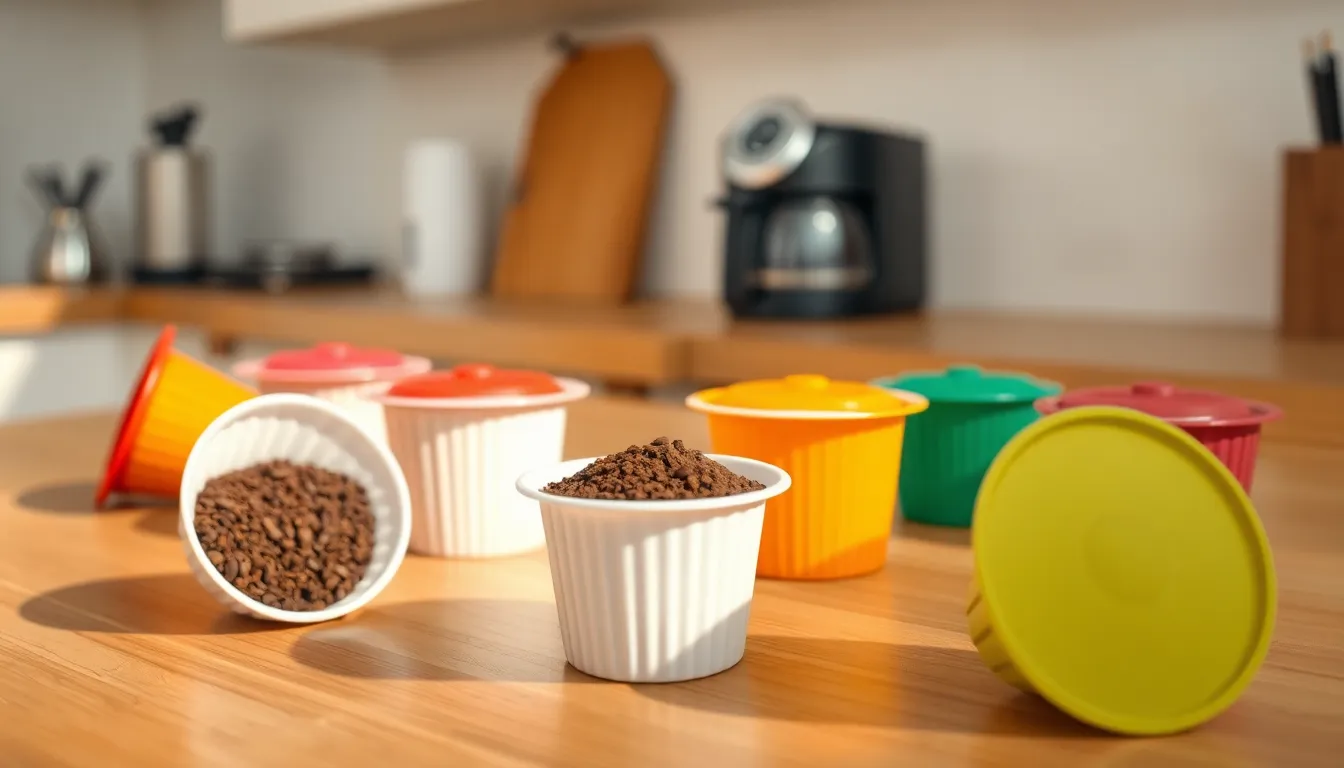Do coffee pods expire? It’s a question that might have crossed your mind as you stare at that forgotten box of K-Cups or Nespresso capsules tucked away in your pantry. The short answer is yes—but there’s more to the story.
While coffee pods don’t spoil in the traditional sense, they do gradually lose freshness and flavor over time. Most manufacturers stamp expiration dates on their packaging, typically ranging from 8 to 12 months from production. Understanding these timelines can help you maximize your morning brew’s quality and ensure you’re not wasting money on pods that won’t deliver that perfect cup you’re craving.
Understanding Coffee Pod Expiration Dates
Coffee pod expiration dates appear on packaging as either “best by,” “use by,” or “sell by” indicators. These dates represent when manufacturers guarantee optimal flavor and freshness, not when pods become unsafe to consume. Most coffee pod brands print dates in a month-year format (MM/YYYY) or as a exact day-month-year combination (DD/MM/YYYY), typically located on the bottom or side of individual pods or on the outer packaging.
Keurig K-Cups generally maintain peak quality for 8-12 months when stored properly, while Nespresso pods typically stay fresh for 6-9 months. Cheaper store brands often have shorter optimal freshness periods of 3-6 months due to differences in packaging quality and materials.
These timeframes vary based on several factors:
- Packaging materials: Pods with better oxygen barriers preserve freshness longer
- Storage conditions: Temperature, humidity, and light exposure significantly impact shelf life
- Coffee variety: Darker roasts typically deteriorate faster than lighter roasts
- Manufacturing processes: Nitrogen-flushing during packaging extends freshness by displacing oxygen
“I’ve noticed my morning K-Cups still taste great even a month past their date,” shares Rikki Manny, “but the flavor definitely isn’t as vibrant as fresh ones.”
Understanding these dates helps you maximize your coffee investment and maintain consistent quality in your daily brew. The next time you see an expiration date on your coffee pods, you’ll know exactly what it means for your coffee experience.
How Long Do Coffee Pods Last?
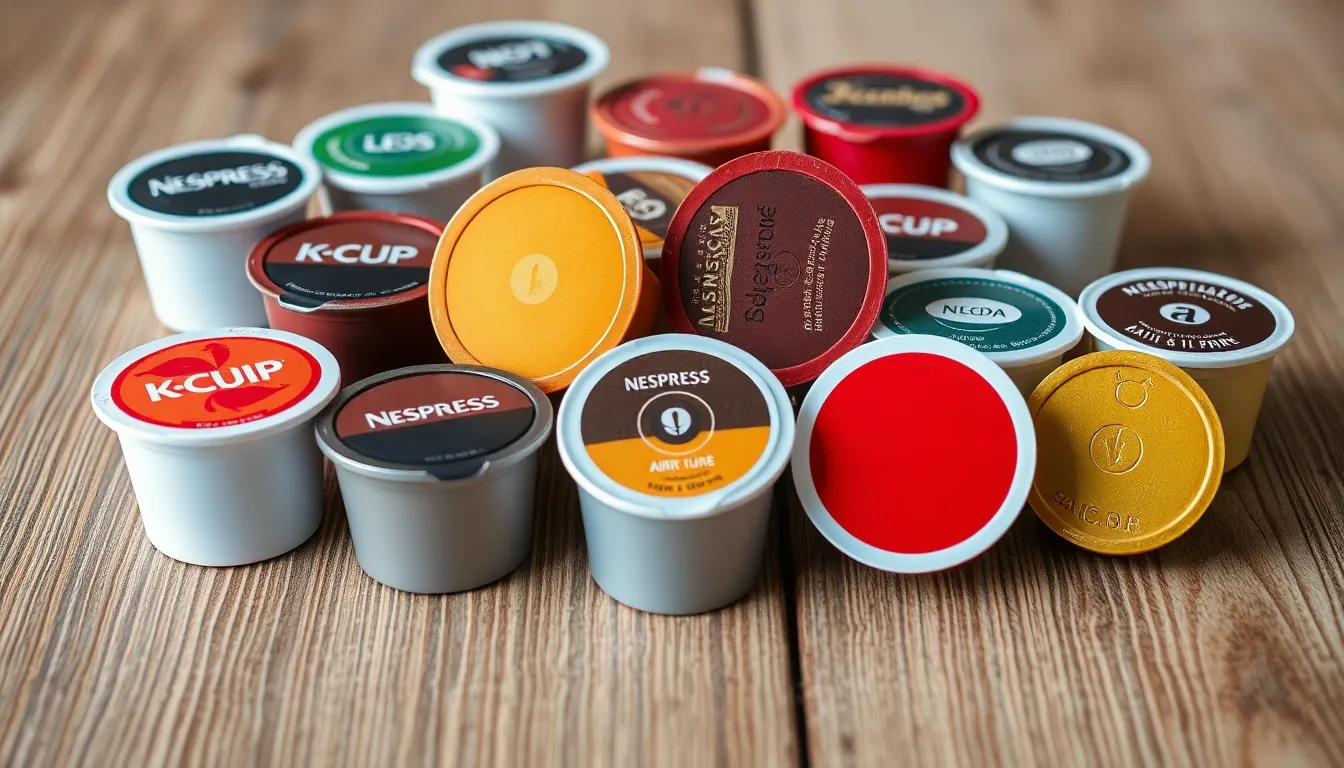
Coffee pods typically last 12 months from production due to their hermetically sealed packaging that protects against light, oxygen, and moisture. This airtight seal preserves freshness and prevents the coffee grounds from becoming stale or spoiling prematurely.
K-Cups and Keurig Pods
K-Cups and Keurig pods don’t technically expire or become harmful to consume, primarily because their coffee grounds remain unexposed to air. Their optimal freshness period extends about one year from production date, after which flavor quality may diminish though they’re still safe to use with intact seals. Damaged or broken foil seals allow air and moisture to penetrate, potentially causing mold growth and making the pod unsafe for consumption. Many users report that even slightly older K-Cups deliver acceptable taste, especially for stronger coffee varieties where subtle flavor changes are less noticeable.
Nespresso Capsules
Nespresso capsules feature similar protective sealing technology to K-Cups but offer a slightly longer shelf life ranging from 12 to 24 months. After this period, quality and flavor profiles begin to degrade gradually, yet the coffee remains drinkable as long as the capsule seal hasn’t been compromised. The aluminum construction of Nespresso capsules provides additional protection against environmental factors compared to plastic alternatives. Coffee enthusiasts often note that espresso-based capsules tend to preserve their distinctive characteristics longer than lighter roasts, which can lose their nuanced flavors more quickly over time.
Signs Your Coffee Pods Have Expired
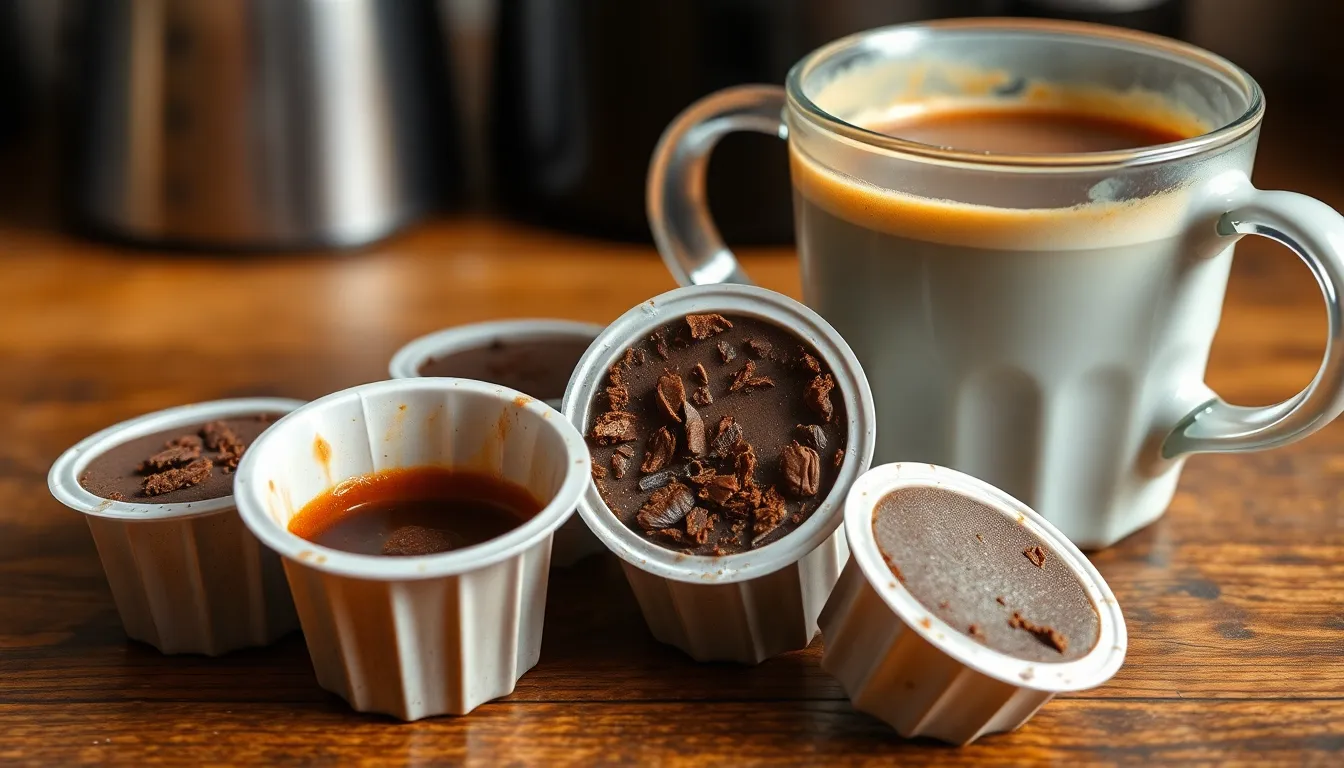
Coffee pods give clear signals when they’re past their prime. While they remain safe to consume long after the “best by” date if stored properly, recognizing quality deterioration helps ensure you’re getting the best flavor from your morning brew.
Visual Indicators
Inspect your coffee pods for discoloration or clumping of the grounds inside, as these changes suggest the coffee has degraded over time. Mold growth inside the pod indicates moisture contamination and requires immediate disposal, regardless of the expiration date. Examine the pod’s seal carefully—tears, cracks, or broken foil compromise the hermetic packaging that protects your coffee from oxygen, moisture, and light. Damaged packaging accelerates deterioration and may allow contaminants to enter, making the pod potentially unsafe for consumption.
Aroma and Taste Changes
Fresh coffee pods emit a robust, pleasant aroma similar to freshly ground coffee beans. Your expired pods often smell flat, off, or unpleasant when compared to new ones. If you’re uncertain about a pod’s freshness, open it and smell the contents directly—a sour or unusual odor indicates the coffee has lost its quality. The ultimate test comes from brewing a small cup; flat, sour, or weak flavor profiles signal that the coffee has degraded beyond its optimal drinking window. Coffee from expired pods typically lacks the depth, complexity, and vibrancy of fresh coffee, resulting in a disappointing cup that fails to deliver the experience you expect.
Factors Affecting Coffee Pod Shelf Life
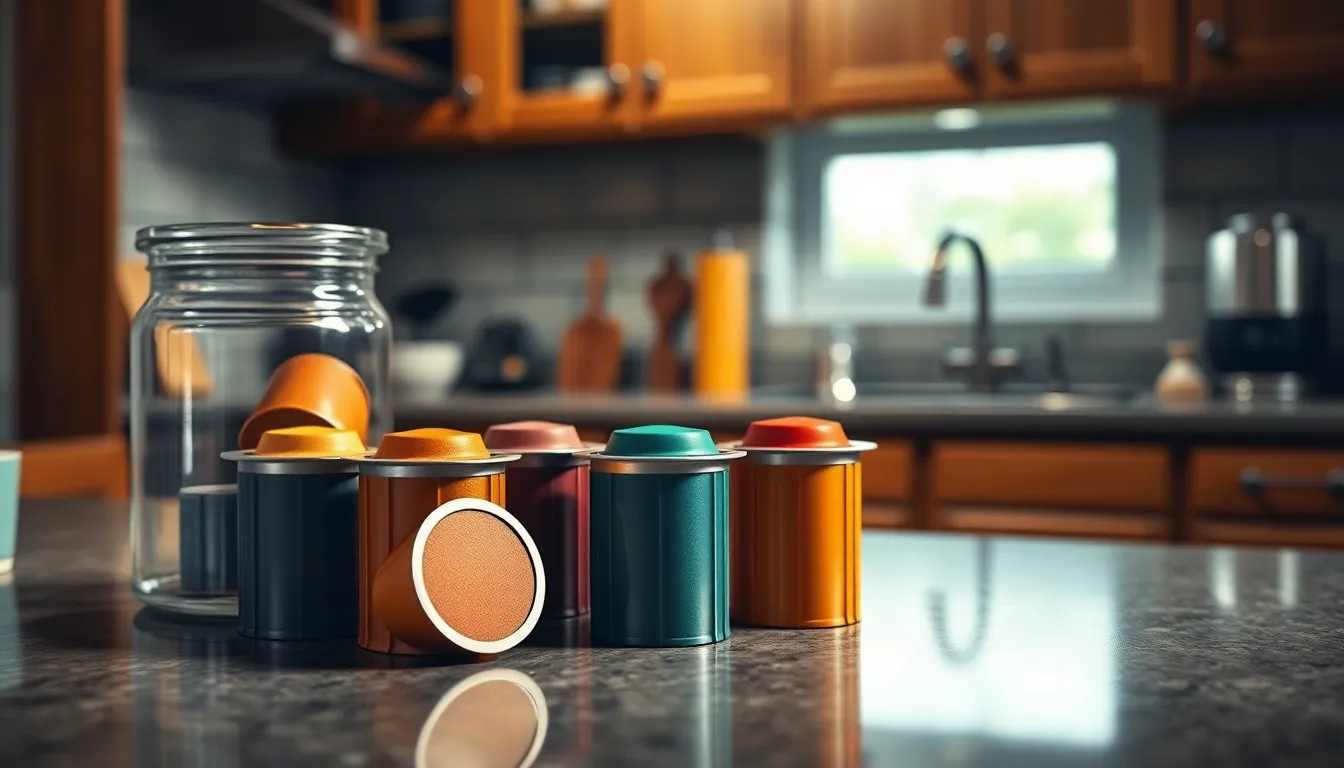
Multiple factors influence how long your coffee pods remain fresh and flavorful beyond their best-before dates. Understanding these elements helps you maximize pod longevity and maintain optimal taste in every cup.
Storage Conditions
Proper storage significantly extends coffee pod freshness, with cool, dry places providing ideal preservation environments. Exposure to heat accelerates the degradation of coffee compounds, causing pods to lose their rich flavors much faster than those kept at room temperature or below. Humidity poses another serious threat, as moisture can penetrate even seemingly intact seals over time, potentially causing mold growth inside the pods. Fluctuating temperatures create condensation that further compromises pod integrity, so consistent storage conditions matter just as much as the conditions themselves. Kitchen cabinets away from appliances that generate heat offer perfect storage spots for your coffee collection.
Packaging Materials
The construction and quality of pod packaging directly impacts shelf life, with hermetically sealed containers offering superior protection. Aluminum pods, like those used by Nespresso, typically outlast plastic varieties because they provide complete barriers against oxygen, light, and moisture—the three primary enemies of coffee freshness. The airtight foil seals found on most pods create a protective environment that keeps coffee compounds stable for 8-12 months under ideal conditions. Single-use pods with damaged packaging compromise this protection system completely, allowing oxidation to occur rapidly and making the coffee stale within days rather than months. Examining pods for punctures, tears, or compression damage before use ensures you’re brewing with properly protected coffee.
How to Properly Store Coffee Pods
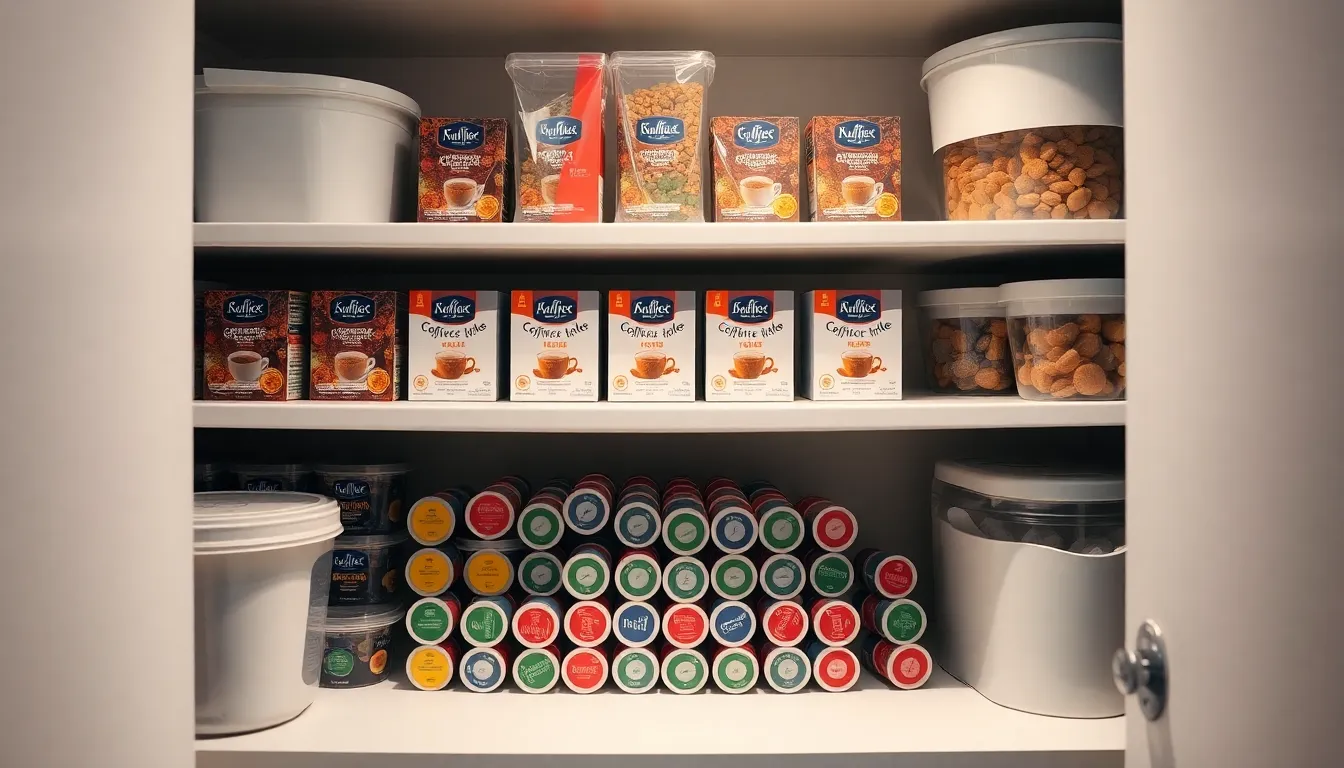
Proper storage significantly extends the freshness and flavor of your coffee pods beyond their printed date. Keeping pods in a cool, dry place away from direct sunlight prevents heat damage that can degrade quality prematurely. Kitchens offer many storage options, but areas near stoves, refrigerators, or sinks create humidity that compromises pod integrity.
Maintaining the original packaging provides the best protection for your coffee pods, as manufacturers design these containers specifically to preserve freshness. Alternatively, store your pods in airtight containers if the original packaging becomes damaged or cumbersome. This extra layer of protection shields pods from moisture and preserves their aromatic oils.
Always inspect your pods before brewing by checking for damaged seals, which are the primary defense against environmental factors. Discard any pods showing visible moisture inside the packaging or developing mold spots, as these indicate contamination that affects both taste and safety. The hermetic seal on quality coffee pods typically keeps contents fresh for 8-12 months when stored correctly.
Temperature consistency plays a crucial role in pod preservation, with pantry shelves offering ideal conditions. Counter storage works well for frequently used pods, provided they’re kept away from windows where sunlight exposure accelerates flavor deterioration. By following these storage practices, you’ll enjoy maximum flavor from every pod and avoid wasting money on prematurely degraded coffee.
Can You Use Expired Coffee Pods?
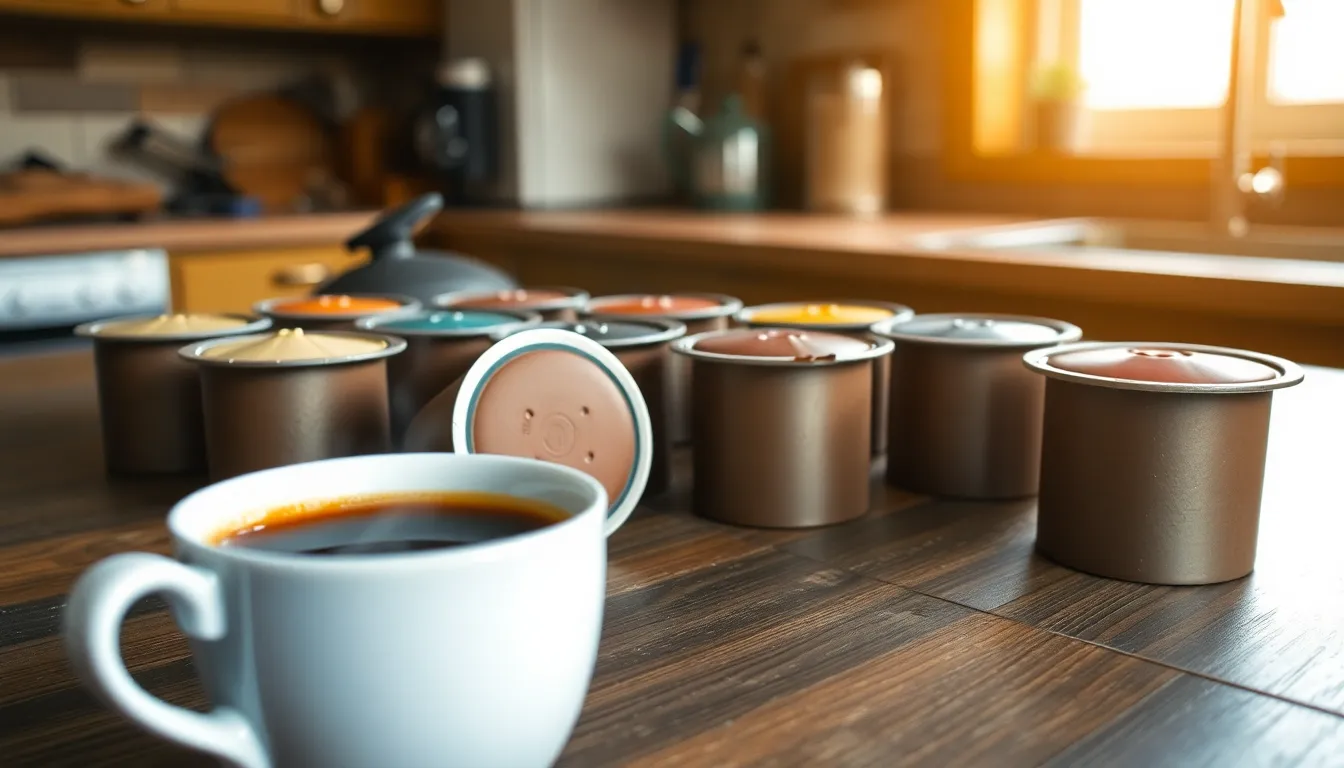
Expired coffee pods remain safe to consume in most cases, provided their seals are intact and they’ve been stored properly. Many coffee enthusiasts report drinking coffee from pods months or even years past their best-by dates without experiencing any health issues. The primary concern with using expired pods isn’t safety but rather diminished flavor quality – your morning cup simply won’t taste as vibrant or aromatic.
Coffee pods typically retain most of their flavor for 6-9 months beyond their best-by date, making them perfectly acceptable to use during this period. After the 9-month mark, you’ll notice a gradual decline in freshness and aroma, with flavors becoming increasingly flat or stale after 12 months. Even though this quality reduction, the coffee remains safe to drink thanks to the hermetic sealing and vacuum-packing that protects against contamination.
Always inspect expired pods before brewing by checking for:
- Intact seals without punctures or tears
- Absence of visible mold or unusual discoloration
- Normal coffee aroma when opened (not musty or sour)
- No moisture inside the pod
Your safety comes first when dealing with expired pods – if you notice a broken seal, visible mold, or detect any unusual smells, it’s best to discard the pod immediately. These signs indicate potential contamination that could pose health risks. Coffee pods with compromised packaging allow moisture to enter, creating conditions for mold growth and bacterial development.
Conclusion
Coffee pods do expire but mainly in terms of flavor rather than safety. With proper storage in cool dry places away from sunlight and heat your pods can maintain quality well beyond their best-by dates. Most pods remain at peak flavor for 8-12 months but can be safely consumed for several months afterward if their seals remain intact.
Always check your pods for damaged packaging discoloration or off smells before brewing. When in doubt brew a test cup and let your taste buds decide. While expired pods might deliver a less impressive flavor they’re rarely a health concern unless visibly contaminated.
By understanding expiration timeframes and implementing proper storage techniques you’ll maximize your coffee investment and ensure every cup delivers the experience you expect.
Frequently Asked Questions
Do coffee pods actually expire?
Coffee pods don’t “expire” in the sense of becoming unsafe, but they do lose freshness and flavor over time. Most manufacturers indicate best-by dates ranging from 8-12 months after production. These dates indicate when the manufacturer guarantees optimal flavor rather than safety concerns. Properly sealed pods remain safe to consume long after the best-by date, though you may notice a decline in taste quality.
How long do K-Cups and Keurig pods last?
K-Cups and Keurig pods typically maintain peak quality for 8-12 months from production. Thanks to their hermetically sealed packaging, they remain safe to consume indefinitely as long as their seals stay intact. However, flavor quality generally diminishes after one year. The plastic construction offers good protection, but not as much as aluminum alternatives.
What about Nespresso capsules? Do they last longer?
Nespresso capsules have a shelf life of 12-24 months, longer than many plastic alternatives. Their aluminum construction provides superior protection against oxygen, light, and moisture—the main enemies of coffee freshness. Like other pods, they remain safe to drink well beyond their best-by date if the seal remains unbroken, though flavor quality will gradually decline.
How can I tell if my coffee pods have expired?
Look for visual indicators like discoloration, clumping of grounds, or mold growth (which requires immediate disposal). Check that the seal is intact with no damage. Fresh pods should emit a robust coffee aroma—if they smell flat or sour, they’re past prime. The ultimate test is brewing a cup; weak or unpleasant flavor indicates the coffee has degraded beyond its optimal drinking window.
What factors affect coffee pod shelf life?
Storage conditions significantly impact pod longevity. Keep pods in cool, dry places away from heat and humidity, which accelerate flavor degradation and may promote mold growth. Packaging material quality matters too—aluminum pods generally outlast plastic ones due to superior protection against oxygen, light, and moisture. The coffee variety and manufacturing processes also influence shelf life.
How should I store coffee pods to extend their freshness?
Store pods in a cool, dry place away from direct sunlight and heat sources. Keep them in their original packaging for optimal protection, or transfer to airtight containers if the original packaging is damaged. Avoid refrigeration or freezing as temperature fluctuations can cause condensation inside the pods. Regularly inspect pods for damaged seals or visible moisture before brewing.
Is it safe to use expired coffee pods?
Yes, expired coffee pods are generally safe to consume if their seals remain intact and they’ve been stored properly. The primary concern with expired pods is diminished flavor quality, not safety. Coffee pods typically retain acceptable flavor for 6-9 months beyond their best-by date. Always check for intact seals, absence of mold, and normal aroma before brewing expired pods.
How long will coffee pods last past their expiration date?
Most coffee pods maintain good flavor for 6-9 months beyond their best-by date when properly stored. After 12 months post-expiration, flavors become noticeably flat or stale, though the coffee remains safe to drink with intact seals. Premium brands with better packaging typically retain quality longer than cheaper alternatives. Consistent temperature and proper storage maximize flavor longevity.

